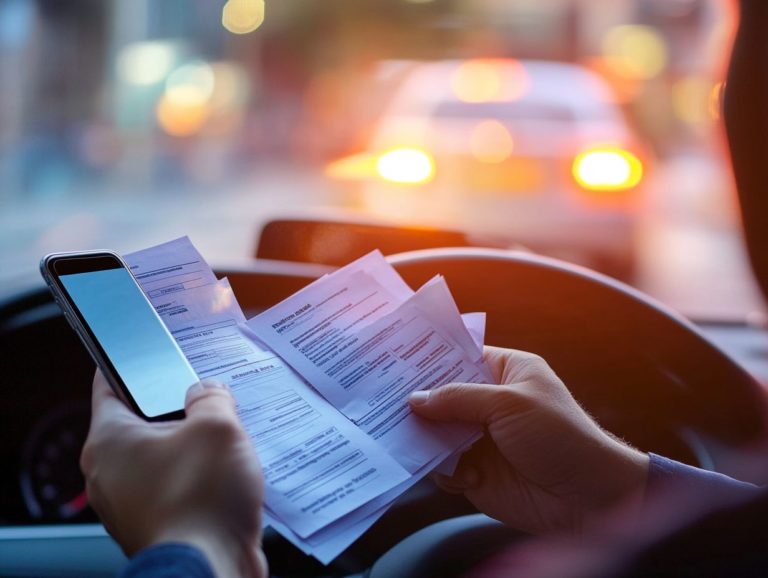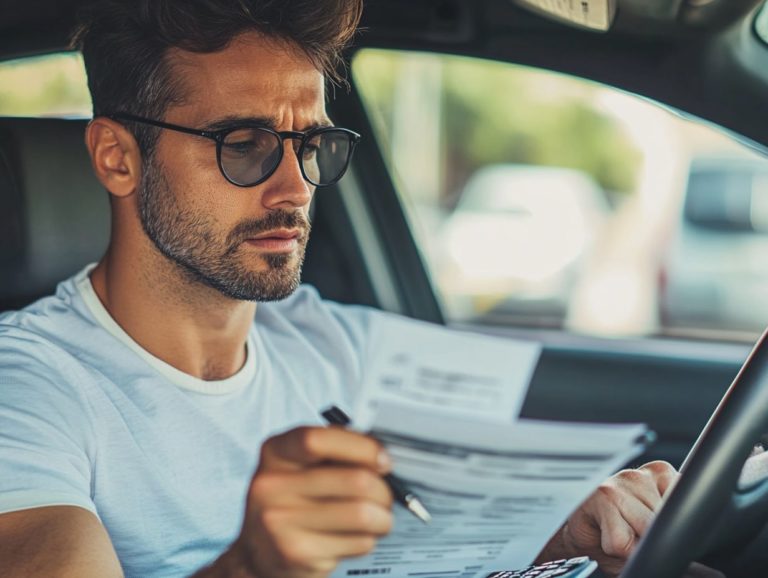5 Essential Steps After a Car Accident for High-Risk Drivers
Experiencing a car accident can be overwhelming, especially for high-risk drivers who face unique challenges.
Understanding how to navigate the aftermath is crucial for protecting your safety and rights. This article outlines five vital steps to take right after an accident, from assessing injuries to promptly notifying your insurance company.
You will explore the specific vulnerabilities high-risk drivers encounter, discover common causes of accidents, and uncover strategies for securing affordable insurance. Read on to equip yourself with the essential knowledge needed during these critical moments.
Contents
- Key Takeaways:
- 1. Prioritize Safety: Check for Injuries and Call for Help
- 2. Move to a Safe Location
- 3. Exchange Information with the Other Driver(s)
- 4. Take Photos and Gather Evidence
- 5. Notify Your Insurance Company
- 6. Seek Medical Attention
- 7. File a Police Report
- 8. Keep Track of Expenses
- 9. Consider Hiring a Lawyer
- 10. Attend Follow-Up Appointments
- 11. Be Mindful of Time Limits for Filing Claims
- 12. Understand Your Insurance Coverage
- 13. Be Cautious of What You Say to Insurance Companies
- 14. Consider Taking a Defensive Driving Course
- 15. Seek Emotional Support if Needed
- What Makes High-Risk Drivers More Vulnerable in Car Accidents?
- Frequently Asked Questions
- What are the 5 essential steps high-risk drivers should take after a car accident?
- Why is assessing the situation important after a car accident for high-risk drivers?
- Should high-risk drivers always call for help after a car accident?
- What information should high-risk drivers gather after a car accident?
- Why is it important for high-risk drivers to document the car accident?
- What should high-risk drivers do after following the 5 essential steps after a car accident?
Key Takeaways:
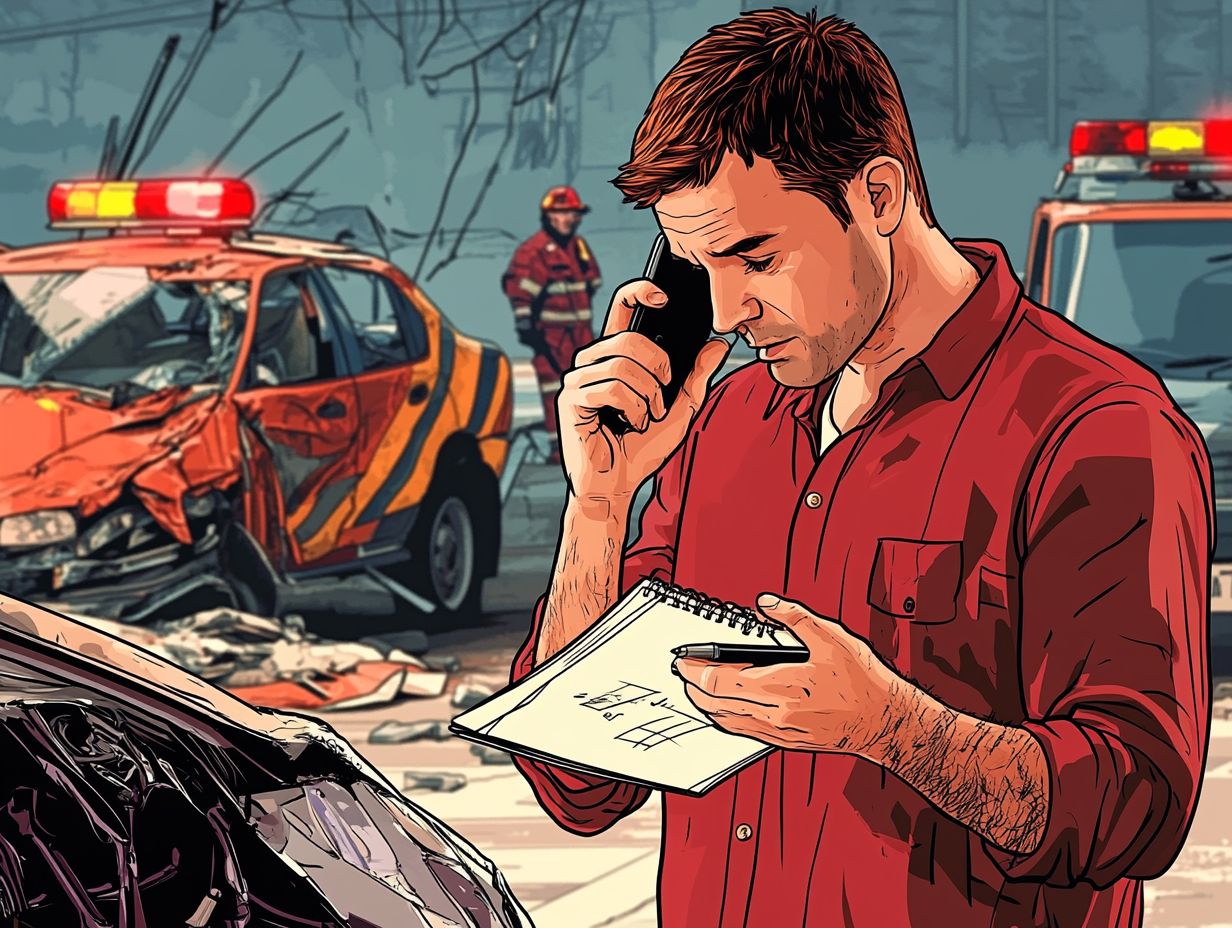
- 1. Check for injuries call for help right away!
- 2. Move your vehicle to a safe spot to prevent further accidents and exchange information with the other driver(s).
- 3. Notify your insurance company, document the accident with photos and evidence, and consider seeking medical attention and legal representation.
1. Prioritize Safety: Check for Injuries and Call for Help
After a car accident, your first priority should be to check for injuries among everyone involved. Call 911 for medical assistance immediately, if necessary. This crucial step ensures everyone’s safety and begins the process of getting the right help from emergency services, preventing further complications.
Once you’ve assessed initial injuries, determine what safety items might be necessary. You may need warning triangles to alert other drivers, reflective vests for visibility, or even first aid supplies to assist victims while waiting for professional help.
Effective communication with emergency services is vital. Clearly explain the situation, your location, and the number of injured individuals to expedite their response. Remember, prioritizing personal injuries is key; individuals’ well-being takes precedence over vehicle damage.
Bystanders can help by offering support and assistance while ensuring the area remains safe until help arrives.
2. Move to a Safe Location
Once you ve ensured everyone s safety, it s crucial to move to a secure location away from the accident scene to reduce risks, particularly if you are near traffic signs or a busy road.
Before making any moves, carefully assess the situation. Check for oncoming traffic and, if possible, set up reflective triangles or flares to alert other drivers. Then, guide everyone passengers and bystanders alike to a safer area, ideally far from potential hazards and unstable vehicles.
Stay vigilant and keep an eye on your surroundings, including traffic and any approaching emergency vehicles.
Only after confirming that everyone is safe should you start discussing the details of the accident and exchange necessary information.
3. Exchange Information with the Other Driver(s)
Exchanging information with other drivers involved in a car accident is essential for establishing the facts. This exchange should include critical details such as insurance information, vehicle identification numbers, and any witness contact details.
Gather these key details to create a comprehensive checklist that ensures nothing slips through the cracks. Be sure to include names, addresses, phone numbers, insurance companies, and policy numbers from all parties involved.
Accurate documentation helps you understand the circumstances surrounding the accident and plays a pivotal role in any future claims processes.
By meticulously collecting and recording all relevant information, you can simplify the often stressful task of dealing with insurance claims, making the experience far less daunting.
In conclusion, staying informed and prepared for accidents can significantly ease the process. Equip yourself with knowledge, ensure safety, and remember to act swiftly in emergencies.
4. Take Photos and Gather Evidence
Taking photos and gathering evidence at the accident scene is a crucial step in documenting the incident. This action provides a clear visual account of vehicle damage and strengthens your accident report for insurance claims.
These images become essential pieces of evidence, offering a comprehensive view of the circumstances surrounding the accident. It s vital for you to capture the extent of vehicle damage from various angles, ensuring that no details are overlooked.
Don t forget to photograph the accident scene itself. Consider the layout of the road and any nearby traffic signs. These details can help illustrate how the incident unfolded. Documenting skid marks on the roadway can also shed light on the actions taken before the collision.
Collecting thorough evidence can significantly streamline your claims process and prove invaluable in resolving any disputes that might arise later.
5. Notify Your Insurance Company
Once you ve ensured the safety of everyone involved and documented the accident, the next pivotal step is to notify your insurance company. It’s time to jump into the claims process and secure your coverage!
Ideally, you should inform your insurer as soon as possible within 24 hours of the incident is best. This quick notification can significantly streamline your claims process.
When you reach out, be ready to provide key details: the date, time, and location of the accident, any police report number, and information about the other parties involved.
Keep in mind that the claims process can directly impact your future insurance rates. Understanding the intricacies of your auto policy is essential. Certain types of claims may result in rate increases, especially if you are found at fault.
Having a clear understanding of your coverage can shape how you approach the claim. This knowledge empowers you to make informed choices that align with your financial obligations.
6. Seek Medical Attention
Seeking medical attention after a car accident is vital, not just for addressing any injuries but also for securing the documentation necessary for your Personal Injury Protection insurance claims.
Being aware of your body s signals is key. If you notice any pain, swelling, or unusual sensations post-accident, it s time to take action. Common injuries often include whiplash, contusions, or even more serious conditions like fractures and concussions.
It s crucial for you to closely monitor your physical state, as some injuries may not present symptoms right away. Timely medical evaluations can be crucial. They not only aid in your healing but also provide essential medical records to back up your insurance claims.
Don t delay see a doctor today to safeguard your health and your claims!
7. File a Police Report
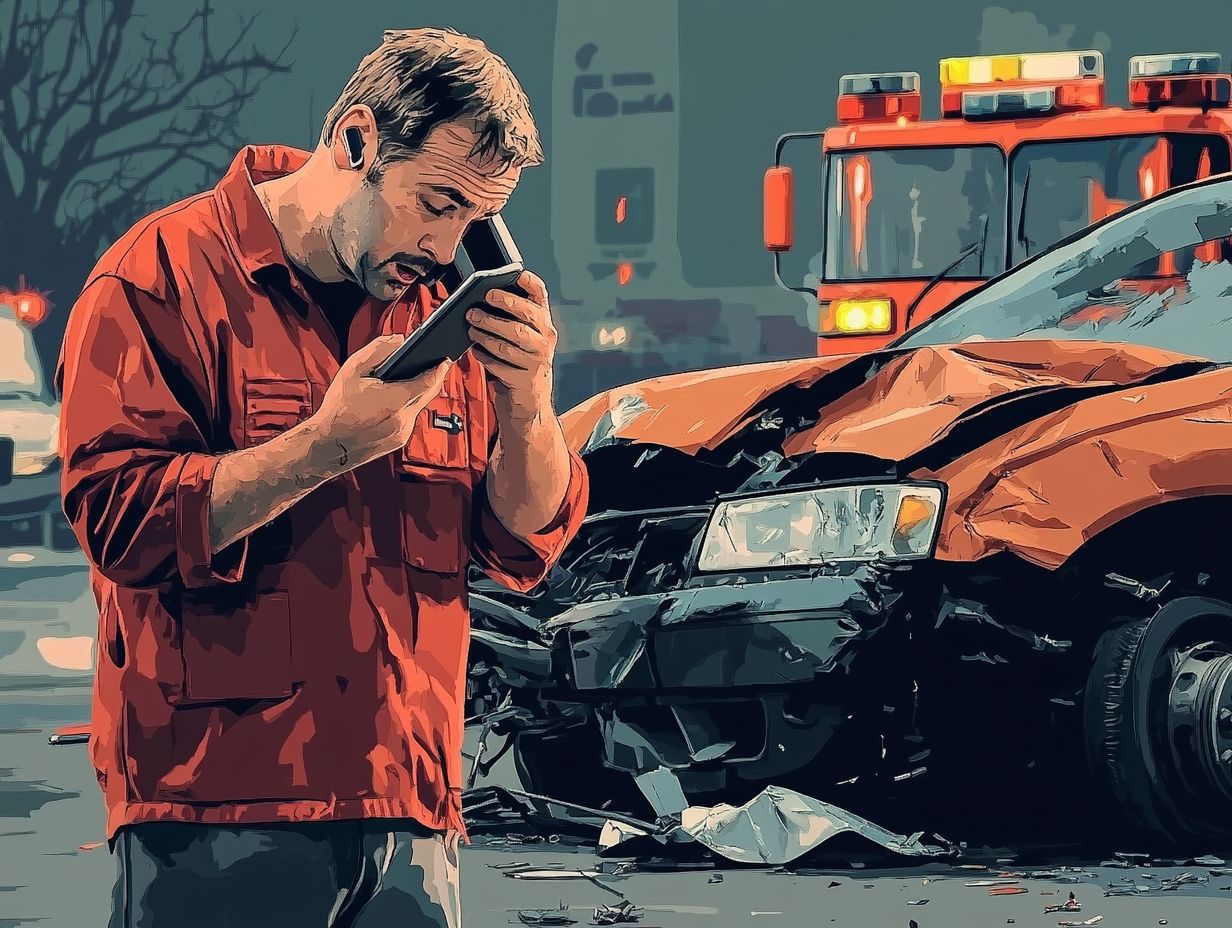
Filing a police report after a car accident is essential for establishing an official record. This record will be invaluable in determining liability and fault during the claims process.
In this process, you should provide accurate information, including the date, time, and location of the accident, details about the vehicles involved, and any injuries sustained. Eyewitness accounts and photographs can further bolster your report.
Obtaining a copy of the police report is crucial. It not only serves as a valuable reference for your records but may also be required when you file an insurance claim.
This report can significantly influence the outcomes of insurance claims and any potential legal actions. It helps establish a clearer timeline and provides fact-based evidence to support your case and that of any other involved parties.
8. Keep Track of Expenses
Keeping track of your expenses after a car accident is essential. It not only helps you understand potential out-of-pocket costs for auto repairs but also provides the necessary documentation for your insurance claim.
To maintain a thorough expense log, document all related costs, including repairs, medical bills, rental cars, and lost wages from missed work.
This organized approach helps you understand the total financial impact of the accident. It also serves as crucial evidence during negotiations with insurance companies.
By recording these expenses, you empower yourself to make informed financial decisions. Knowing which costs relate to the incident helps you set realistic budgets and seek appropriate compensation.
9. Consider Hiring a Lawyer
If personal injury or liability disputes arise, hiring a lawyer can be crucial. They provide essential legal support and help you navigate accident procedures.
When dealing with medical expenses, lost wages, and the possibility of long-term impairment, an experienced legal advocate is vital. They offer clarity and direction through overwhelming legal jargon and paperwork.
A personal injury attorney understands the legal landscape well. They excel at negotiating with insurance companies, working hard to secure fair compensation for your suffering.
When seeking legal assistance, consider key factors such as:
- A proven track record in personal injury cases
- Strong communication skills
- A steadfast commitment to prioritizing your needs throughout the entire process
10. Attend Follow-Up Appointments
After a car accident, attending follow-up medical appointments is crucial. These visits aid your recovery and strengthen your insurance claim by documenting ongoing medical needs.
These appointments allow healthcare professionals to monitor your progress and adjust treatment plans as needed. Consistently attending sends a strong message to your insurance provider about your commitment to healing.
To strengthen your case, gather important documentation. This includes medical records, bills, and notes from your healthcare providers, which establish the severity of your injuries.
11. Be Mindful of Time Limits for Filing Claims
Be aware of the time limits for filing insurance claims after a car accident. Many companies and state laws have strict deadlines affecting your ability to recover costs.
These deadlines vary from a few weeks to several years, depending on your area and claim type. Missing these deadlines could result in a complete denial of compensation.
To avoid this issue, maintain thorough documentation of the accident. Consult with legal experts soon after the incident and set reminders to submit all necessary paperwork on time.
12. Understand Your Insurance Coverage
Understanding your insurance coverage is crucial for making informed decisions after an accident. It gives you the power to navigate your collision coverage, which pays for damages to your vehicle in an accident, liability limits, the maximum amount your insurance will pay if you are at fault in an accident, and the array of insurance options at your disposal.
Familiarize yourself with different types of insurance policies. This includes comprehensive coverage, uninsured motorist coverage, and personal injury protection. You ll gain a clearer understanding of what each one offers.
Regularly assess your coverage levels to ensure adequate protection against future mishaps. This is especially important as your circumstances or vehicle value changes. This proactive approach cultivates peace of mind and equips you to tackle any unforeseen challenges that may arise on the road. Take control of your coverage today!
13. Be Cautious of What You Say to Insurance Companies
Being cautious about what you say to insurance companies after a car accident is absolutely essential, as misstatements can lead to claim denials or, worse, allegations of insurance fraud.
When you speak with insurance representatives, it’s critical to provide clear and factual details about the accident, including the time, location, and circumstances surrounding the event. Sharing accurate assessments of vehicle damage and any injuries you sustained is vital, as this information can significantly influence the outcome of your claim. Misrepresenting details or neglecting to mention important facts can have serious repercussions, including delayed payments or outright denial of your claim.
To navigate this process effectively, best practices recommend that you remain calm, stick to the facts, and avoid emotional statements. Stay smart and protect your claim by being cautious! Always take notes during your conversations and consider following up in writing to ensure everything is documented correctly.
14. Consider Taking a Defensive Driving Course
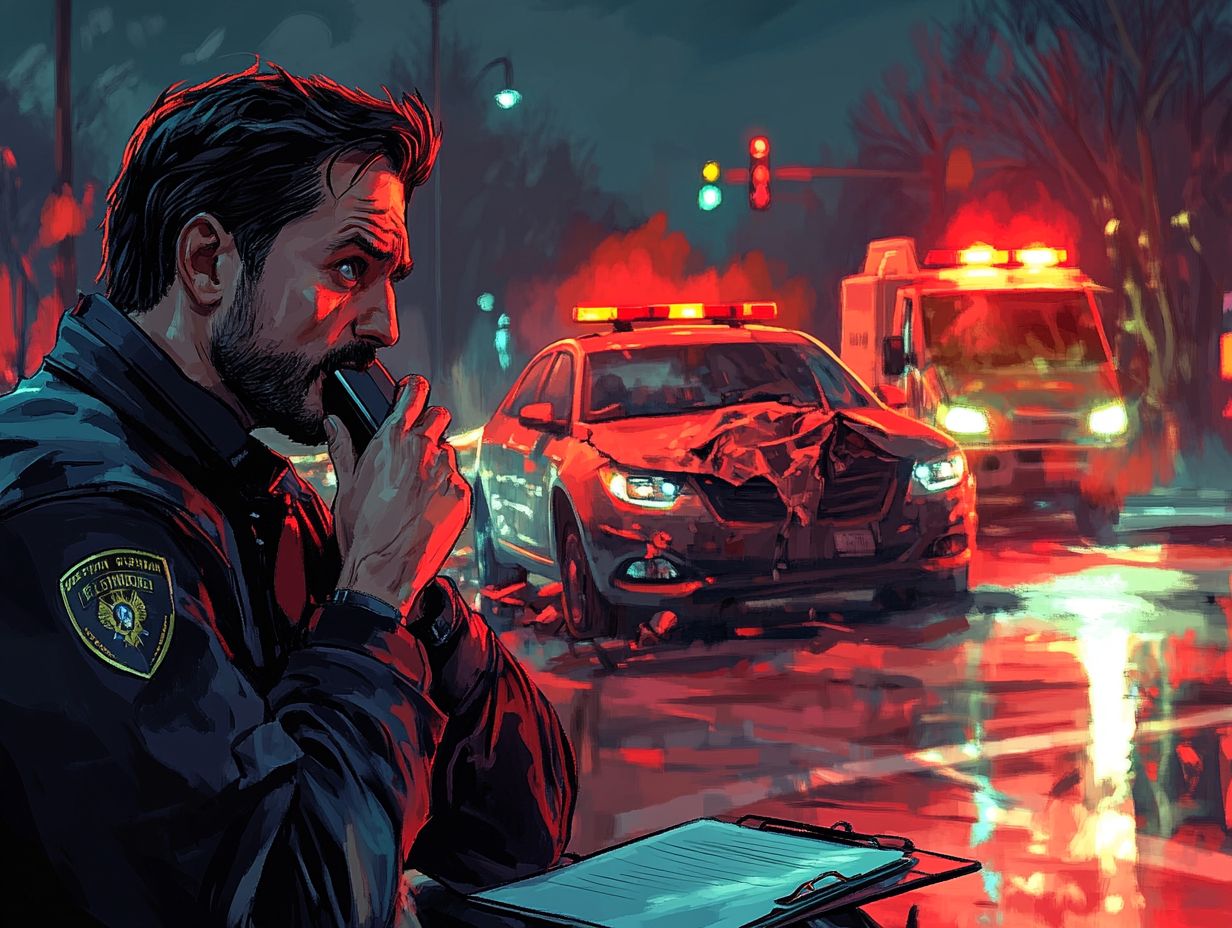
Considering a defensive driving course can greatly enhance your safety on the road and even lower your insurance rates, as many companies offer discounts for completing these courses based on improved accident statistics.
These programs typically delve into a variety of crucial topics, such as hazard recognition, effective vehicle handling techniques, and the vital importance of adhering to traffic laws. By equipping you with these invaluable skills, the courses foster greater awareness while driving, encouraging more cautious behavior and ultimately reducing accident rates.
As you explore the repercussions of reckless driving and learn to anticipate the actions of others, you’ll become a safer driver and gain access to better insurance options. Many insurance providers recognize the value of these courses and reward participants with lower premiums, translating into significant savings for you. Sign up for a defensive driving course and save on insurance!
15. Seek Emotional Support if Needed
Seeking emotional support after a car accident is just as crucial as focusing on your physical recovery. The personal injury and trauma you ve experienced can significantly impact your mental health and financial security in the long run.
The emotional fallout can reveal itself in various forms, such as anxiety, depression, and even post-traumatic stress disorder. Engaging in counseling or joining support groups offers you a safe haven to express your feelings, share experiences, and connect with others who truly understand what you re going through.
By confronting these mental health challenges head-on, you re not just taking proactive steps toward healing; you re also setting the stage for a smoother recovery journey. Embrace emotional support and take charge of your recovery journey!
The benefits of emotional support can ultimately cultivate resilience and give you the power to reclaim control over your life, paving a more comprehensive path to recovery.
What Makes High-Risk Drivers More Vulnerable in Car Accidents?
High-risk drivers often find themselves in a precarious position when it comes to car accidents. Their vulnerability is influenced by factors like poor driving habits, inexperience, and insufficient insurance options. These elements can significantly worsen accident rates and their outcomes.
These traits often lead to reckless behaviors such as speeding, weaving between lanes without signaling, and driving under the influence. Such reckless actions heighten the risk of accidents and can result in serious repercussions, including soaring insurance premiums and potential legal troubles.
Understanding your insurance options is crucial, as traditional policies might not sufficiently cover the unique risks that high-risk drivers present. Seeking specialized coverage can offer more comprehensive protection, enabling better navigation of risky circumstances while encouraging safer driving practices.
What Are Some Common Causes of Car Accidents Involving High-Risk Drivers?
Common causes of car accidents involving high-risk drivers include:
- Distracted driving
- Speeding
- Driving under the influence
These factors significantly contribute to accident statistics and compromise overall driver safety.
Take distracted driving, for instance: it has emerged as a leading factor in road accidents. Studies indicate that nearly 400,000 injuries occur each year due to this behavior. High-risk drivers often get distracted by texting, failing to recognize the severe implications of their actions.
Speeding remains a persistent issue, with over 25% of fatal crashes attributed to excessive speed, reflecting a blatant disregard for posted limits.
Driving under the influence is another major concern, accounting for approximately one-third of all motor vehicle fatalities. These alarming statistics demand immediate awareness and preventive measures aimed at high-risk drivers.
By fostering safer driving practices, we can work to reduce the likelihood of accidents and create a more secure driving environment for everyone.
How Can High-Risk Drivers Prevent Car Accidents?
High-risk drivers can significantly reduce the likelihood of car accidents by embracing safer driving practices. This includes avoiding distractions, adhering to speed limits, and checking out 5 ways to compare insurance for high-risk drivers to find suitable coverage options while enrolling in courses that teach safe driving skills.
Establishing personal guidelines, such as creating phone-free zones and limiting the number of passengers, can enhance focus on the road. Staying informed about safe driving techniques through regular research or attending workshops can equip drivers with the latest insights on effective practices.
Utilizing technology like apps that monitor driving habits or in-car systems that deliver real-time feedback can foster greater awareness and accountability. By incorporating these strategies into daily routines, high-risk drivers create a safer driving experience for themselves and contribute to the safety of everyone sharing the road.
What Are the Consequences of Being a High-Risk Driver Involved in a Car Accident?
Being labeled a high-risk driver and getting into a car accident can lead to serious repercussions, including skyrocketing insurance rates, potential legal issues, and an increased risk of personal injury claims.
Those rising insurance premiums can quickly become a financial burden, impacting both current budgets and long-term financial strategies. The emotional weight can be considerable; the stigma of being a high-risk driver can create anxiety about future driving scenarios. This label narrows options for affordable insurance and stirs frustration and a sense of helplessness.
As drivers navigate the fallout from incidents, the cumulative stress can take a toll on overall well-being, underscoring how deeply such events can affect lives beyond just the financial side.
How Can High-Risk Drivers Find Affordable Car Insurance?
High-risk drivers can find affordable car insurance by exploring various options. They should seek quotes from multiple providers and check their eligibility for discounts or financial assistance programs.
Start by collecting quotes online. Utilize comparison tools that simplify the analysis of different coverage levels alongside associated costs.
It’s crucial to compare policies beyond just the price. A thorough examination of coverage ensures that all potential risks are adequately addressed.
Talking to an insurance expert can give you valuable advice. They can recommend specific programs tailored to your individual circumstances. These experts often highlight lesser-known discounts, helping you maximize your savings while ensuring you have adequate protection on the road.
Frequently Asked Questions
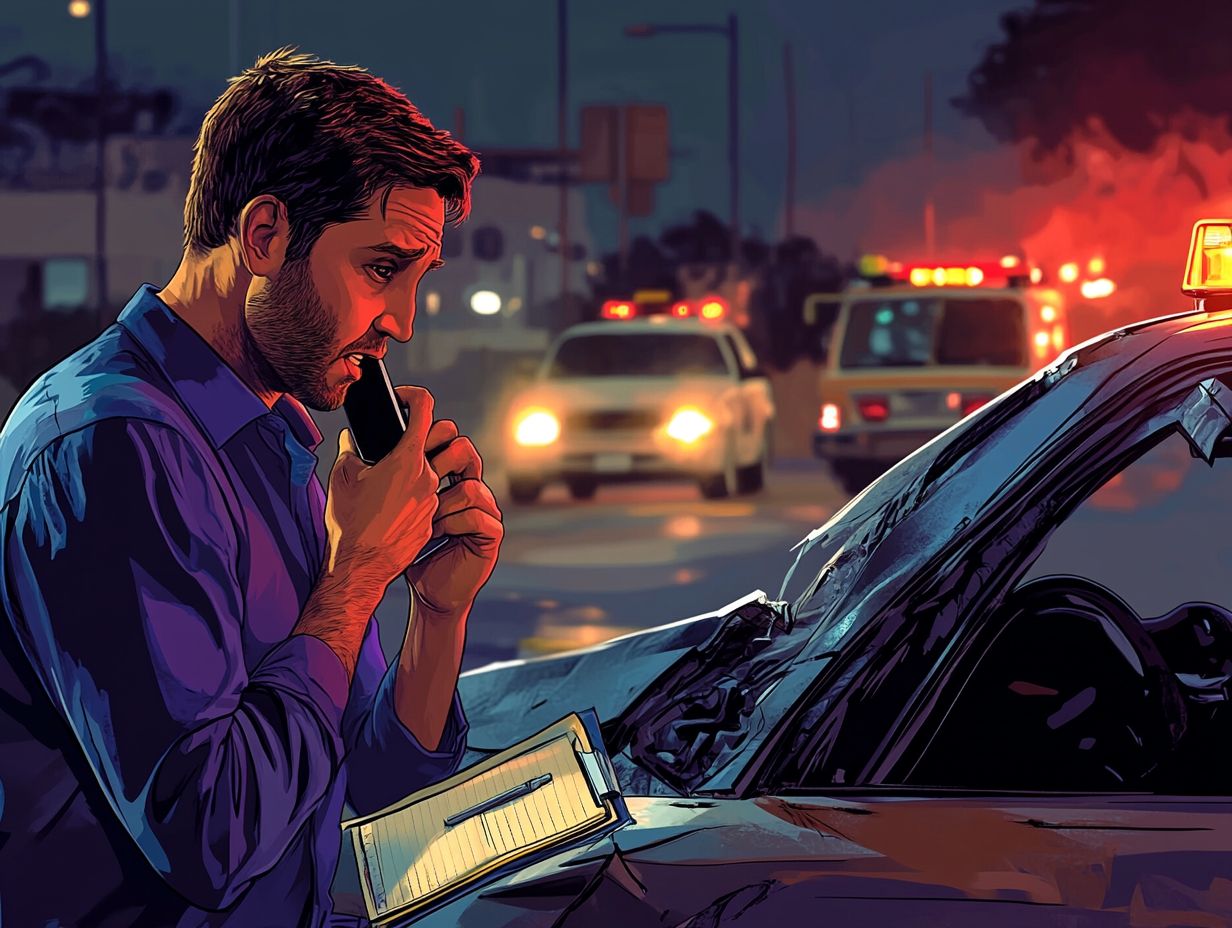
What are the 5 essential steps high-risk drivers should take after a car accident?
The 5 essential steps high-risk drivers should take after a car accident are: assess the situation, call for help, gather information, document the incident, and refer to tips for staying safe as a high-risk driver to follow up with insurance and legal proceedings.
Why is assessing the situation important after a car accident for high-risk drivers?
Assessing the situation after a car accident allows high-risk drivers to determine the severity of the accident and any injuries sustained. Following the right steps is critical, such as those outlined in the 7 steps to take post-accident for claims. This information is crucial for seeking appropriate medical care and contacting the necessary authorities.
Should high-risk drivers always call for help after a car accident?
Yes, it is important for high-risk drivers to call for help after a car accident, even if it seems minor. This ensures that any injuries or damages are properly documented and helps prevent potential legal or insurance issues in the future.
What information should high-risk drivers gather after a car accident?
High-risk drivers should gather the other driver’s contact and insurance information, the make and model of the vehicles involved, witness contact information, and any photos or videos of the accident scene and damages. Additionally, exploring tips to find affordable insurance can also be beneficial.
Why is it important for high-risk drivers to document the car accident?
Documenting the car accident helps high-risk drivers have a record of the incident, which can be used as evidence for insurance claims or legal proceedings. This information can also help determine fault and potentially prevent any false accusations or claims against the high-risk driver. For further guidance, consider exploring resources for high-risk drivers seeking insurance.
What should high-risk drivers do after following the 5 essential steps after a car accident?
After following the 5 essential steps, high-risk drivers should follow up with their insurance company and, if necessary, seek legal assistance. Additionally, referring to 5 insurance tips for new high-risk drivers can be beneficial. High-risk drivers should act quickly to avoid problems down the line!


